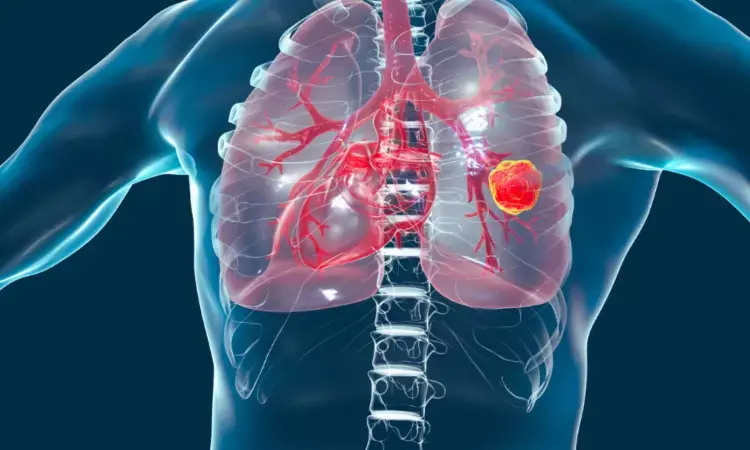- Home
- Medical news & Guidelines
- Anesthesiology
- Cardiology and CTVS
- Critical Care
- Dentistry
- Dermatology
- Diabetes and Endocrinology
- ENT
- Gastroenterology
- Medicine
- Nephrology
- Neurology
- Obstretics-Gynaecology
- Oncology
- Ophthalmology
- Orthopaedics
- Pediatrics-Neonatology
- Psychiatry
- Pulmonology
- Radiology
- Surgery
- Urology
- Laboratory Medicine
- Diet
- Nursing
- Paramedical
- Physiotherapy
- Health news
- Fact Check
- Bone Health Fact Check
- Brain Health Fact Check
- Cancer Related Fact Check
- Child Care Fact Check
- Dental and oral health fact check
- Diabetes and metabolic health fact check
- Diet and Nutrition Fact Check
- Eye and ENT Care Fact Check
- Fitness fact check
- Gut health fact check
- Heart health fact check
- Kidney health fact check
- Medical education fact check
- Men's health fact check
- Respiratory fact check
- Skin and hair care fact check
- Vaccine and Immunization fact check
- Women's health fact check
- AYUSH
- State News
- Andaman and Nicobar Islands
- Andhra Pradesh
- Arunachal Pradesh
- Assam
- Bihar
- Chandigarh
- Chattisgarh
- Dadra and Nagar Haveli
- Daman and Diu
- Delhi
- Goa
- Gujarat
- Haryana
- Himachal Pradesh
- Jammu & Kashmir
- Jharkhand
- Karnataka
- Kerala
- Ladakh
- Lakshadweep
- Madhya Pradesh
- Maharashtra
- Manipur
- Meghalaya
- Mizoram
- Nagaland
- Odisha
- Puducherry
- Punjab
- Rajasthan
- Sikkim
- Tamil Nadu
- Telangana
- Tripura
- Uttar Pradesh
- Uttrakhand
- West Bengal
- Medical Education
- Industry
Ground-glass opacities on CT lung cancer imaging encouraging prognostic factor in non-small cell lung cancer: Study

China: A recent study published in the American Journal of Roentgenology has brought attention to the significance of minor (<=10%) ground-glass opacity (GGO) components in clinical Stage I non–small cell lung cancer (NSCLC). The research explores the associations between this less pronounced feature of imaging and its impact on pathologic characteristics and clinical outcomes, providing valuable insights for managing early-stage lung cancer.
The study found the presence of ground-glass opacities (GGO) rather than pure-solid nodules on computed tomography (CT) lung cancer imaging to be an encouraging prognostic factor in non-small cell lung cancer.
"Minor-GGO elements on lung CT (equal to or less than 10%) were associated with a reduced likelihood of recurrence," the researchers reported.
Ground-glass opacity, often observed on CT scans, represents areas of partial lung consolidation or infiltration without obscuring the underlying structures. While major GGO components have been extensively studied in the context of NSCLC, the significance of minor GGO components, defined as ≤ 10% of the tumor size, has remained relatively understudied until now.
To fill this knowledge gap, Meiling Li, Shanghai Jiao Tong University School of Medicine, Shanghai, China, and colleagues aimed to investigate the impact of a minor (≤10%) GGO component on the prognosis of clinical stage I NSCLC compared to pure-solid nodules.
The retrospective study included 382 patients (mean age, 61 years; 210 men) who underwent surgical resection between January 1, 2015, and December 31, 2015, for clinical stage I NSCLC appearing on preoperative chest CT as a nodule with a consolidation-to-tumor (CTR) ratio ≥0.9 and <1.0.
Nodules were independently assigned by two radiologists to a minor-GGO (≥0.9 CTR <1.0) or pure-solid (CTR=1.0) groups. Cancer-specific survival (CSS) and recurrence-free survival (RFS) were compared between groups. Cox proportional hazard models were used to evaluate associations with outcomes.
The study led to the following findings:
- The two radiologists agreed for all nodules' classification into the minor-GGO (n=106) or pure-solid (n=276) groups.
- The mean CTR of the minor-GGO group was 0.93±0.02.
- Minor-GGO nodules, compared to pure-solid nodules, showed greater solid component diameter (2.68 versus 2.16 cm) and total nodule diameter (2.89 versus 2.16 cm).
- The minor-GGO group, in comparison with the pure-solid group, showed lower frequencies of visceral pleural invasion (6.6% versus 17.0%), pathologic lymph node involvement (4.7% versus 20.3%), and epidermal growth factor mutation (71.6% versus 39.9%).
- The minor-GGO group, compared to the pure-solid group, showed better 5-year RFS (83.4% vs 55.0%) and better 5-year CSS (92.4% vs 76.4%).
- In multivariable analysis adjusting for patient, imaging, pathologic, and genetic factors, a minor-GGO component was independently associated with a decreased likelihood of recurrence (HR=0.37) but not with the likelihood of CSS.
The findings showed that among patients with clinical stage I NSCLC, cancers with a minor-GGO component were linked with a better prognosis versus those with a pure-solid appearance.
"Radiologists encountering predominantly solid nodules on CT should carefully evaluate images for even a minor-GGO component given the favorable prognosis," the researchers concluded.
Reference:
DOI: https://doi.org/10.2214/AJR.24.31283
Dr Kamal Kant Kohli-MBBS, DTCD- a chest specialist with more than 30 years of practice and a flair for writing clinical articles, Dr Kamal Kant Kohli joined Medical Dialogues as a Chief Editor of Medical News. Besides writing articles, as an editor, he proofreads and verifies all the medical content published on Medical Dialogues including those coming from journals, studies,medical conferences,guidelines etc. Email: drkohli@medicaldialogues.in. Contact no. 011-43720751


